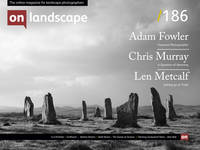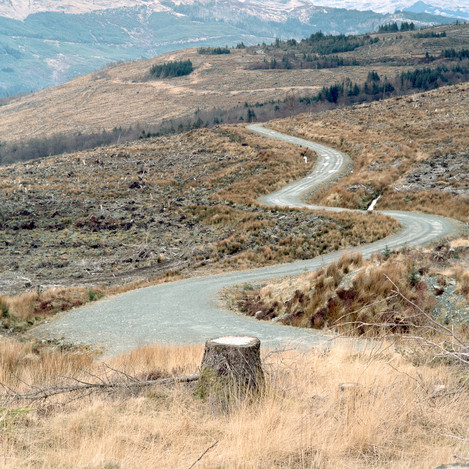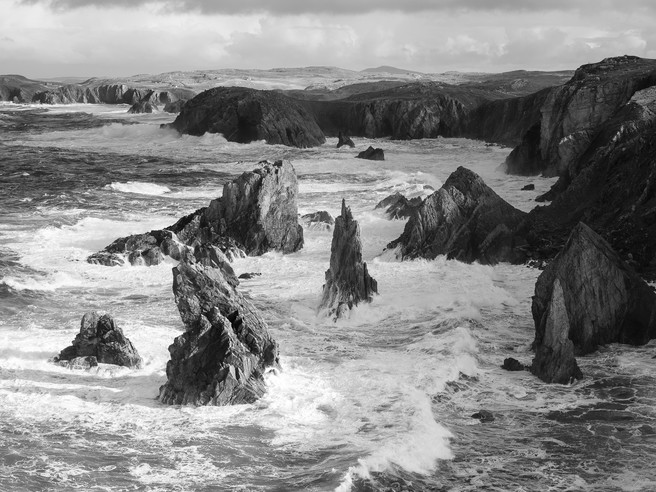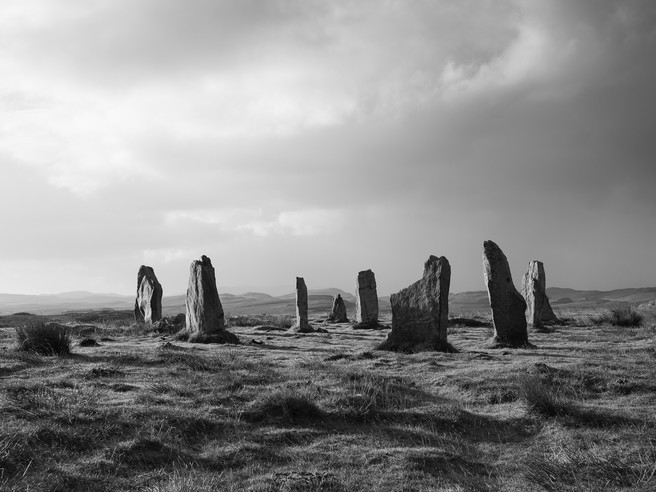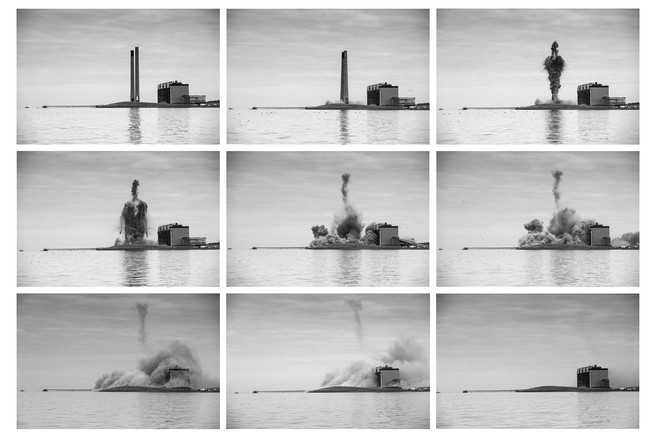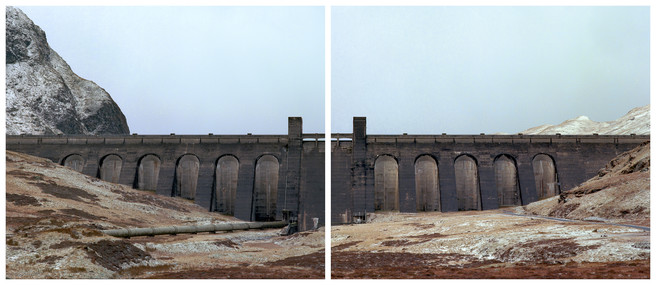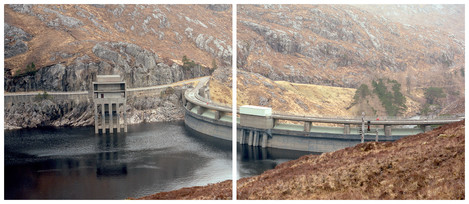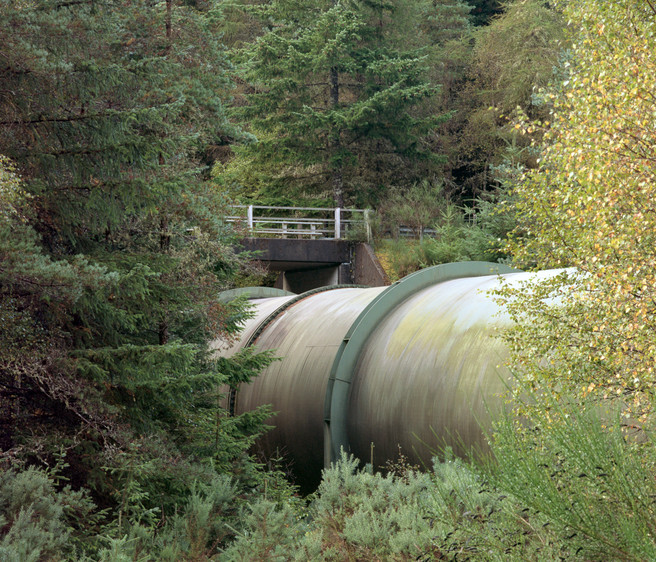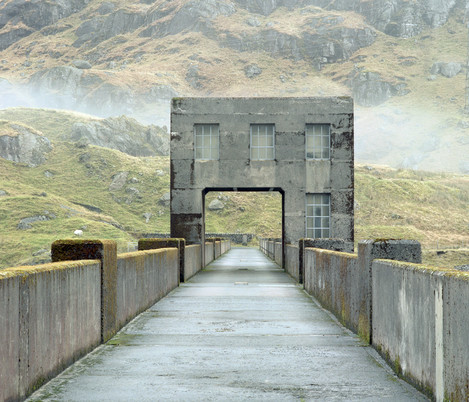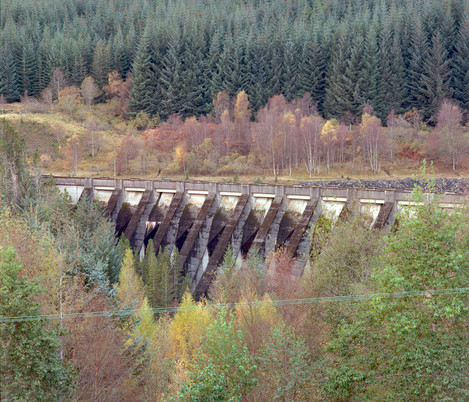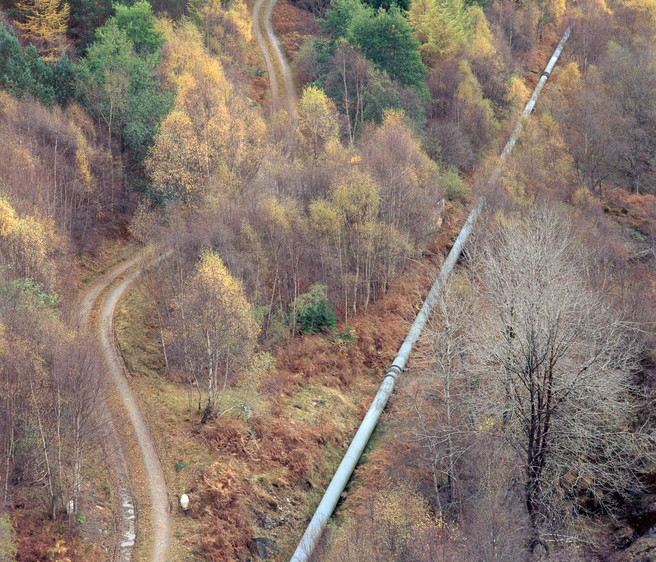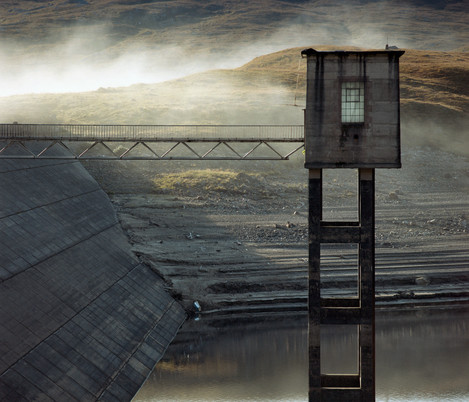Featured Photgrapher

Adam Fowler
I am a photographer working in landscape and documentary. I have always gravitated towards forms of landscape photography because it allows me plenty of time for contemplation and I enjoy the times of solitude that it provides. I used to work in the video games industry and disappearing into the landscape was a great way to escape the fast paced, stressful work environment video games is. Doing something completely on my own was a great counterpoint against building something with a team consisting of hundreds of people. I don't work in video games anymore I just disappear more often.

Michéla Griffith
In 2012 I paused by my local river and everything changed. I’ve moved away from what many expect photographs to be: my images deconstruct the literal and reimagine the subjective, reflecting the curiosity that water has inspired in my practice. Water has been my conduit: it has sharpened my vision, given me permission to experiment and continues to introduce me to new ways of seeing.
One of the things that prompted me to approach Adam about an interview at this particular point in time was the campaign that sought to prevent the planned hydro schemes in Glen Etive. Adam has for some time been considering in photographic terms the structures that we tend to avoid or overlook, including the many hydro-electric dams built in the Scottish Highlands in the 1950s and 1960s. The massive scale of these prompts me to wonder whether our views (in both senses) of such interventions in the landscape change over time, as nature does her best to try to mellow them. We live with a legacy of constructions, sometimes happily, sometimes less so. What will our successors’ and descendants’ views of today’s proposals be in 50 years’ time? It wouldn’t be fair to expect Adam to answer this, but perhaps through his eyes we can re-evaluate – and perhaps in some cases where the hand of man is now less obvious – fully realise what we have already done to the Highlands.
Would you like to start by telling readers a little about yourself – where you grew up, your education and early interests, and what that led you to do as a career?
I was born in Birmingham. I didn’t stick around though, my family left within three months to live in Lincoln. At five years old after another move, I ended up in Edinburgh. My whole childhood from then on was spent living on the outskirts of Edinburgh. While I lived in the city I had access to the countryside and I spent much time exploring it on my bike. Well that was until the early 1980s when home computing became a reality. From then on I spent most of my teen years in a darkened room playing computer games and then writing my own. When I left school I went onto Leeds University to do a Maths degree, followed by an MSc in the then trendy subject of Chaos (Non-linear mathematical systems) at Heriot-Watt University back in Edinburgh. My first job and in fact my only job was at the video games company DMA Design as a programmer. I spent 23 years there. During that time it morphed into Rockstar North and I slowly made my way up the ladder, eventually becoming the Technical Director. Much of my time at Rockstar was spent working on a little known game called Grand Theft Auto. In 2015 I left. Working at Rockstar was all consuming; I had very little time for anything else and I had this other thing I wanted to do, called Photography.
How did you first become interested in photography and what kind of images did you initially set out to make? How much time are you now able to devote to photography?
In my childhood, my father was a keen photographer. But being a contrary kind of kid I showed no interest at all. My sister was the one to take on that mantle. She was the one messing about with darkroom chemicals in our bathroom.
It wasn’t until 2009 that I took up a camera with the intention of taking more than snapshots. I had a year’s sabbatical from work and we spent it living in the Pyrenees. While there I purchased an iPhone 3GS. Suddenly I had a camera in my pocket all the time. I started taking pictures around the ski resort we were living in. This was a bit of a revelation. The joy I got from trying to get the right composition was something new to me. The iPhone camera had many limitations and I started to hit them more and more. So when some friends visited and one of them had a DSLR I realised that was what I needed. After that, I was lost. All I could think of was Photography. If I wasn’t out taking photos, I was processing them on the laptop, reading up about technique or perusing websites for the latest equipment.
Initially, I took photos of everything. But given at the time I lived in the mountains the obvious thing to take photos of was the surrounding landscape. This would become my concentration. The majority of my photos were of either mountains or the local woodland.
Nowadays I am lucky enough to be financially independent so I could spend all my time devoted to photography but I probably split it evenly with various programming projects I have running at the same time.
Who (photographers, artists or individuals) or what has most inspired you, or driven you forward in your own development as a photographer?
Given I have had no formal education in photography my first inspirations were various photographers I found on social media. Initially, my inspiration came from a number of photographers who were doing black and white long exposure work. This included people like Joel Tjintjelaar, Julia Anna Gospodarou and Russ Barnes. This would lead me to the work of Michael Kenna.
Since then though I have come to realise photography can be so much more than pretty pictures or pleasing compositions. It can inform, tell a story, evoke an emotion. This came through following people like Rob Hudson, and the work of the collective Inside the Outside, of which he is a founding member, and Iain Sarjeant whose imprint Another Place Press is releasing some of the more interesting photobooks within the landscape genre. My own work now comes from a mixture of influences including the New Topographics (Bernd and Hilla Becher, Lewis Baltz, Robert Adams) and some of the more recent landscape work from the likes of Mark Power and Toshio Shibata.
What is it that draws you to document our interventions in the landscape rather than adopt the more prevailing romantic view? Looking through your Journal entries, visual form and structure are recurring themes, whether you’re looking exclusively at man-made forms, or comparing and contrasting these with natural features.
I want to tell stories. The stories the landscape tells on its own I am not so interested in. Rocks move, seasons change and repeat, plants grow and die. These can become interesting when used as metaphors for the human condition, but on their own do not provoke anything strong in me.
Outside of my long term projects, repeating forms and geometric structures are something I like to play with. These don’t necessarily have to come from the man made. If nature is ready to present these to me I’m happy to point my camera at it. But in general, the geometry of buildings provides a source for this more frequently.
What reaction, interpretation or value do you hope to provoke in viewers in response to the man-made and the monumental?
Life is complex. My images represent complex situations where difficult decisions are being made between the value of a landscape in itself and the value of developing it. When I am documenting these, I’m not setting out some doctrine. I don’t generally have a solution to the issues I am highlighting. I hope I can encourage people to investigate further and also not respond in such a dogmatic way which can so often be the case when it comes to conservation issues.
When standing in front of some of the large infrastructure man has placed on the landscape it is hard not to be in awe. The fact that we can build at this scale and push nature around to this level is quite something to behold. Unfortunately, we are also very good at destroying at the same time and what we lose is sometimes of more value than what we gain.
Would you like to choose 2-3 favourite photographs from your own portfolio and tell us a little about why they are special to you?
Demolition Sequence #1
The sequence is from the destruction of the chimneys of the Cockenzie power station in East Lothian. The project was about nostalgia, looking at a structure that many people had some attachment to. They were part of the horizon line when viewed from Edinburgh. Driving north up the A1, when you saw the chimneys you knew you were nearly home. At the same time though Cockenzie, when running, was the dirtiest power station in the UK. Not something to be so nostalgic about. The project was also about our industrial heritage. The power station represented a point in our history when we were dependent on coal. It was also considered an important modernist building. None of this was thought to be important enough to conserve and the power station was demolished in 2015.
Trotternish ridge in Skye
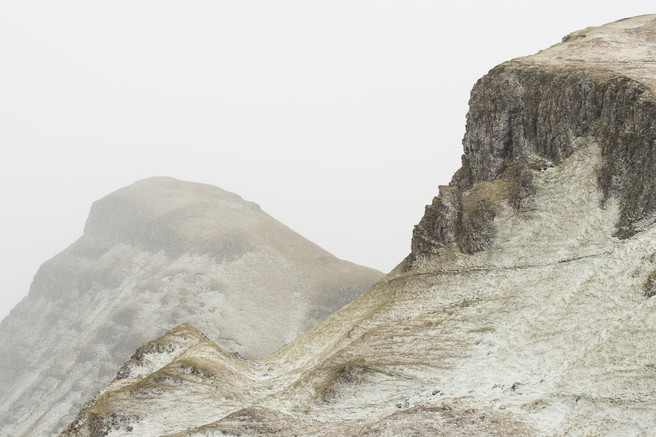
This is a landscape shot and it is of rather a well-known spot. It could be a landscape photography trope. I hope not. This is late April snow looking down the Trotternish Ridge in Skye. I like the detail the snow brings out in the mountains. The flat light and fog have turned them into cutout cards placed on top of each other. They seem to exist outside of the real world. For the rest of that visit to Skye, the only thing I made photos of were snow covered mountains, trying to repeat what I had here.
Lawers dam
The image is part of a much larger project. I have spent the last few years documenting the hydroelectric infrastructure built in Scotland post world war 2. This also shows off a format I have been using quite frequently. I call them broken panoramas. I initially used them because of limitations of my equipment. The Hasselblad camera I use has a 6x6 square negative. Dams don’t tend to be square. They are long and thin, much more suited to a panorama image. I started to take two images to generate a panorama. But because I had been taking the images on film it felt wrong to try and stitch them together in Photoshop so I just present them as separate images. Later I did buy a panorama camera but liked the aesthetic so much I continued to present the panoramas in this way.
Can you talk a little about the cameras and lenses – and film – that you like to use, and whether this has changed over time?
While I started out using digital exclusively, for the last four years I have been using a mixture of film and digital cameras. Most of my project work is done on a Hasselblad 503CW film camera. Many people talk about how film slows them down and that makes them think more about what they are doing. Even though I know I take approx. 10 times the number of photos if I’m using a digital camera and still come away with the same number of keepers as when I’m using film I actually think one of the main advantages with film is the enforced gap between taking the photo and seeing the results. When I come to review the negatives may be a few days later or even up to a month later I come to them with fewer preconceptions. I’m less likely to choose a shot because I wanted it to be good.
Black and white negatives are developed by myself and printed in my home darkroom. Darkroom printing is such a magical process. Everyone should have a go at it. Colour negatives are sent off to the lab to be developed and I scan the results when they return. I do really like the colours you get from a colour negative and have found it difficult to replicate these with a digital camera. It adds another parameter to your decision making as well, as different colour films have quite different looks. Colour negative film is incredibly forgiving and can handle high contrast scenes much better than digital.
At the time of writing, the future of the Stills Gallery in Edinburgh seems uncertain. How valuable a resource has it been to you in developing your practice, and what can photographers do to support such facilities?
The City of Edinburgh Council is currently proposing to triple the rent Stills Gallery pays for its premises. This would damage its ability to deliver its programme of exhibitions and events. Stills is one of the longest established photography galleries in the UK and has brought groundbreaking photography to Scotland for many years. While this in itself is enough of a reason to ensure its survival it is also a great resource for local photographers. Stills has a large darkroom facility and an extensive digital suite. It gives photographers access to top of the range equipment that most would probably never see outside of college or university.
Personally, I have been on a number of courses that Stills run. I have learnt both B&W and Colour developing and printing at Stills. I have also made extensive use of their darkrooms to practice and improve my printing skills. It has given me skills I use every day in my photography practice.
The first thing photographers can do to support such facilities is use them. Many people just never find the time but if you want them to be available you need to use them. Go to their exhibitions, use their resources, take one of the courses. If the facilities aren’t used then that gives councils, arts bodies, reasons to not support them. If you are interested in helping Stills you can sign their petition.
What role does digital play for you in making, processing, or printing/presenting images? You’ve developed a modern-day digital alternative to the viewing frame that allows a preview of a specific camera and lens combination without the need to remove the camera from your bag?
I work with a lot of bulky old film cameras, but this doesn’t mean I have left technology behind completely. I am finding frequently my photographic eye is a lot more optimistic than it should be. Many times I find a composition I like, but after spending 5 minutes of getting my camera out of the rucksack, setting up the tripod and framing the shot, I find it wasn’t worth the effort. To short circuit this process I wrote an iPhone app that did the pre-visualisation for me. You set what camera and what focal length you are using in the app and just point the phone at what you want to photograph. You will then get a preview of what you would see through your camera viewfinder on the iPhone screen. If you like it, then get your big camera out. Otherwise, move on. The app is called Viewfinder Preview and is available on the iPhone App Store.
We met back in 2016 on a bookmaking and sequencing workshop co-hosted by John Blakemore and Joseph Wright. How much difference has seeing their creations, and learning to make your own, made to your photography?
My favourite part of that workshop was when John opened up his box of treasures and produced all these photobooks he had made. They came in all sorts of formats and sizes. Photography can be so much more than just making an image. John showed that how you present it and how you sequence it within a group of other images opens up many paths for creativity. Not always, but there are many times now when working on a project I am already thinking about how I would present it in a book form right from the start. This will define what images I take and what format they are in.
How important a part of the process for you is printing an image, by whatever means, and the trials and tribulations that we encounter in getting it wrong, before we get it right?
Printing is a very important part of the process. The physical object, the photo, holds so much more than the ephemeral digital image. A printed image is part of this world, you can hold it in your hands, have a much closer relationship with it. And it can add another layer of creativity in how you present your imagery.
I print a lot of my B&W film using traditional darkroom methods. Most of these are on small 10x8 papers and are for personal consumption. I am still learning when it comes to darkroom printing. It’s a much slower way to process and print film than scanning and moving some sliders in Photoshop but the resultant silver gelatine prints are really rather nice. The tonal quality and depth of black from a darkroom print is so much better than an inkjet print.
When I am printing inkjet prints, it is generally for a book. I don’t tend to print single images as I find the process quite frustrating. I never seem to get the result I’m looking for. If I need prints for sale or exhibition I tend to use professional printers as they do a better job than me.
You’ve recently exhibited as part of the Transient Collective. What role does the group hope to play, and how important is it for photographers to work together and interact beyond the online community?
Transient is newly formed; we are still trying to work out what we are. We formed because we felt there weren’t enough opportunities for Scottish photographers and we were looking to make them for ourselves. This initially formulated itself in our inaugural exhibition ‘Landmarks’. Six of us presented bodies of work under the theme of landmarks. These could be physical, personal or temporal. The exhibition featured quite a disparate subject matter including epilepsy, childhood trauma and my own hydroelectricity work. The advantage of being in the group was the responsibility, pressure and stress of setting up an exhibition was spread across six of us. At the same time, we still had enough space each to present a good body of work.
The collective has also provided us with a forum to present work in progress, and receive more honest feedback. This is something I think all photographers/artists need. Sometimes you need to be told what you are doing isn’t working, but then also having someone you know critically look at your work and give positive feedback is equally helpful. Feedback can also include new possible directions for what you are doing. Social media has pretty much proved it is incapable of any of this.
You’ve spent a lot of time visiting and photographing - and presumably researching - the structures associated with the 50+ hydro-electric dams built over the 20 year period following the Hydro Electric Development (Scotland) Act of 1943. What was it that drew you to this?
For the last few years, I have spent the majority of my time on a project documenting the hydroelectric schemes built in Scotland post World War Two. The initial reason for starting this project was an aesthetic one. I like the contrast between these large masses of concrete and the Scottish glens they are strung across. Especially in the remoter areas of Scotland, they have quite some presence. This evidence of so much human endeavour while there isn’t a soul in sight.
After doing a bit of research I found the story behind their construction was as interesting. The government body created to do this was set up in such a way that its priorities were the people of Scotland, instead of profit. Much modernisation and investment were needed in the Highlands. Any profits made supplying electricity to the Central Belt of Scotland were used to construct smaller hydro schemes in the remoter areas of the Highlands. They also had a duty to encourage socio-economic development through investment in the region. The politic will that created this body would go on to build the NHS a few years later.
What have you learnt from it that is relevant to both our present-day relationships with the physical legacy and our reactions to current infrastructure development? At the time fears were voiced about the ruination of the landscape and detriment to tourism, but publicly these were perhaps tempered by the social vision to bring power and improvements to the Highlands, and the employment that it created? It probably helped too that it was delivered at no cost to the tax-payer.
There was much opposition to the hydro schemes initially. This came from the landowners, salmon fishing interests, the coal board, the tourism industry and conservation bodies like the National Trust and the Association for the Preservation of Rural Scotland. In the end, either alterations were made to appease, or the social vision overrode those concerns. Many of the concerns over the ruination of the landscape were overplayed and nowadays one of the biggest tourist attractions in Pitlochry is the dam.
I don’t think the romantic view of Scotland’s wild landscape has really changed much over the last 150 years. It is still the main argument for conserving our landscape. The likelihood of someone coming down on the side of a development versus conservation is generally related to how much direct benefit they would receive from that development. The photographer who spends two weeks’ holiday in Scotland is probably more likely to be interested in the conservation side of the argument than the individual who sees investment in his local community. The modern day equivalent of the hydro-scheme development would be the many wind farms that are being constructed in Scotland. For many communities that direct benefit is not so obvious anymore. In general, the electricity being generated is sent down to the Central belt of Scotland or even onto England and the profits go to a public company and mainly benefit shareholders. Of course, now this is all tempered by the fact we need to reduce our dependence on fossil fuels. So many people, regardless of locality, see a direct benefit of developments like wind farms because they can relate them to a reduction in greenhouse gases.
Do you have any particular projects or ambitions for the future or themes that you would like to explore further?
I would like to release my hydroelectricity project ‘Neart nan Gleann’ in book form at some point. I have been building book dummies recently looking to get the right form and testing out various sequences of images.
Regarding projects and themes I have one more idea to investigate related to electricity production in Scotland. I would also like to look into the Forestry industry. When travelling around Scotland it is hard not to notice the industrial woodland installed to generate timber. The scars of the recently felled, that interrupt this spruce monoculture, could never be considered beautiful. I am still attracted to them and want to investigate further. Of course as well as excluding much biodiversity these woodlands are also a carbon sink and we should be looking to increase our forestry coverage, but maybe with a little more variety.
If you had to take a break from all things photographic for a week, what would you end up doing? What other hobbies or interests do you have?
If I suddenly managed to lose all my cameras, I would probably spend more time coding on one of my many little programming projects. Most of the apps I make are small tools I use during my photography, so if that counts as photographic, I would get on my bike. I love cycling. I have cycled all my life. It is one of the best ways to leave the world and your worries behind. Being able to get out of town and sail down small country lanes is a wonderful thing. It is also the best way to investigate your local countryside. A bike is fast enough to get you somewhere, but not so fast you miss everything on the way.
And finally, is there someone whose photography you enjoy – perhaps someone that we may not have come across – and whose work you think we should feature in a future issue? They can be amateur or professional.
I’ve recently come across the work of Frances Scott. She is currently exhibiting as part of a group exhibition at Stills Gallery in Edinburgh. She is presenting three images from her project of walking the coastline of all the islands in Orkney. Her imagery is a mixture of the manmade and coastal details. Along with this, she has a series of images which are the GPS tracks of various walks she made along the Orkney coastline. Each one includes a couple of comments from her notebooks about the walk. These images are really intriguing. They give away very little, but enough such that you want to know more about these walks.
Thank you, Adam. It’s been great to find out more about what you get up to when you disappear, and we look forward to seeing ‘Neart nan Gleann’ in book form – keep us posted!
If you’d like to see more of Adam’s work, his website is at https://adamfowlerphotography.co.uk/

